
Fundamentals
Within the realm of hair care, particularly for those with textured, Black, and mixed-race hair, the phrase “satin properties” holds a specific and profound meaning. It speaks to the desirable characteristics imparted by fabrics with a satin weave, offering a gentle embrace for delicate strands. Fundamentally, this refers to the smooth, low-friction surface that satin provides, a surface markedly different from the often-rough textures of conventional materials like cotton. This smoothness is not merely about a luxurious feel; it carries significant implications for maintaining hair health, preserving moisture, and minimizing mechanical stress.
The core explanation of satin properties begins with its construction. Satin is not a raw material, but rather a distinctive method of weaving fibers, where warp yarns float over weft yarns with minimal interlacing. This particular structure creates a glossy, soft surface on one side, making it an ideal choice for items that come into direct contact with hair, such as pillowcases, bonnets, or scarf linings. The unique designation of this weave ensures that hair glides effortlessly across the surface, rather than snagging or absorbing essential moisture.
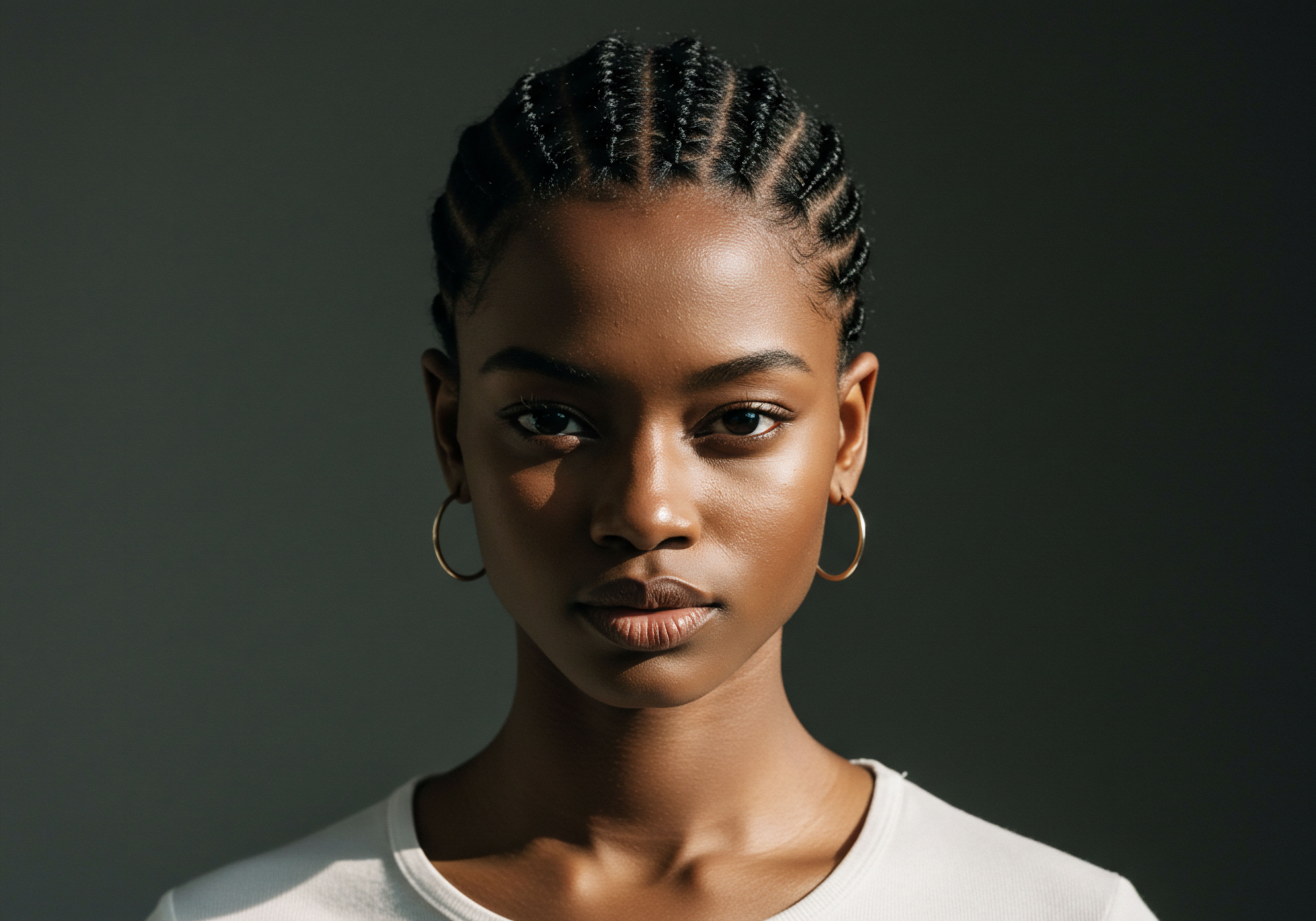
Understanding the Surface Dynamics
The delineation of satin’s impact centers on its interaction with the hair’s outermost layer, the cuticle. Hair, especially that with tighter curl patterns, possesses cuticle scales that tend to be more raised compared to straighter hair types. This natural characteristic, while part of its beauty, also renders textured hair more vulnerable to external friction.
When hair rubs against coarse fabrics, these raised cuticles can lift further, leading to damage, frizz, and ultimately, breakage. Satin’s smooth surface helps keep these cuticles lying flat, safeguarding the hair’s integrity.
Satin properties refer to the low-friction, smooth surface of satin weave fabrics, providing a protective environment for delicate hair strands, particularly those with intricate curl patterns.
Consider the simple act of sleeping. Traditional cotton pillowcases, while comfortable for many, can act like tiny sponges, drawing moisture from hair and creating significant friction as one shifts during the night. This constant abrasion contributes to dryness, tangles, and the dreaded “bed head” that often plagues individuals with textured hair. The meaning of satin properties here becomes clear ❉ they offer a sanctuary for hair, allowing it to retain its natural oils and moisture, which are already challenging for sebum to travel down the length of tightly coiled strands.
The significance extends beyond mere aesthetics; it touches upon the very resilience of textured hair. By reducing the mechanical stress that leads to breakage and split ends, satin materials support the hair’s ability to maintain length and overall vitality. This seemingly small alteration in daily routine can yield substantial benefits for the health and appearance of curls, coils, and waves, allowing them to flourish with greater definition and less disruption.

Fundamental Benefits for Textured Hair
The application of satin properties in hair care offers several foundational advantages for textured hair:
- Reduced Friction ❉ The smooth surface of satin minimizes the rubbing and tugging that can lead to cuticle damage, frizz, and hair breakage. This is especially important for afro-textured hair, which can have fewer protective cuticle layers and is prone to dryness.
- Moisture Retention ❉ Unlike absorbent materials, satin does not wick away the hair’s natural moisture or applied products. This helps maintain hydration, which is crucial for the health and elasticity of textured hair.
- Minimized Tangles ❉ Hair glides easily over satin, preventing the formation of knots and tangles that often result from friction with rougher fabrics, making detangling gentler.
- Preserved Styles ❉ The low-friction environment helps to keep hairstyles, such as braids, twists, or blowouts, intact for longer periods, reducing the need for frequent restyling and further manipulation.

Intermediate
Moving beyond the foundational understanding, the intermediate meaning of “satin properties” for textured hair delves into the practical implications and nuanced considerations of incorporating this material into daily and weekly hair care rituals. Here, the focus shifts from a simple explanation of its surface to a deeper exploration of how these characteristics translate into tangible benefits for hair health and styling longevity, particularly for Black and mixed-race hair. It’s about recognizing the deliberate choice behind satin, understanding its role in a holistic care regimen.
The description of satin properties at this level encompasses a recognition of the material’s role as a protective barrier. For those with highly textured hair, where natural oils from the scalp can struggle to travel down the entire length of the strand due to the intricate curl pattern, external moisture preservation becomes paramount. Satin, by virtue of its non-absorbent nature, acts as a guardian for this vital hydration, allowing products applied to the hair to remain on the strands rather than being absorbed by a pillowcase. This protective quality extends to preventing the microscopic snags that occur with coarser materials, snags that, over time, can lead to cumulative damage and hinder length retention.

Practical Applications in Hair Care
The practical application of satin properties manifests in various forms, each serving to safeguard textured hair. Satin-lined bonnets, scarves, and pillowcases are common tools, thoughtfully chosen for their ability to create a gentle, gliding surface for hair during sleep or under headwear. This intentional choice directly addresses the mechanical stress that can otherwise compromise delicate strands.
Consider the phenomenon of Traction Alopecia, a form of hair loss caused by repeated pulling or tension on the hair and scalp. While often associated with tight hairstyles, recent discussions highlight that even certain nighttime hair care practices can contribute to this condition. Research suggests that while silk scarves, bonnets, and pillows are advocated to help with hair maintenance and avoid breakage, tight-fitting head wraps at night can themselves contribute to traction alopecia, particularly in individuals with other risk factors.
This underscores a crucial point ❉ the benefits of satin properties are maximized when the material is used correctly, without excessive tension on the scalp. A bonnet that is too snug, for instance, can negate the very advantages its satin lining offers by creating unwanted pressure on hair follicles.
Satin’s unique surface supports the delicate architecture of textured hair, mitigating the cumulative effects of friction and moisture loss often experienced with traditional sleep surfaces.
Furthermore, the meaning of satin properties includes its role in maintaining hairstyle integrity. For individuals who invest time and effort into defining their curls, stretching their coils, or preserving a blowout, the smooth surface of satin helps to keep these styles undisturbed overnight. This reduces the need for daily manipulation, which in itself can be a source of mechanical stress and breakage for textured hair. The hair simply glides, rather than being compressed or tangled, preserving its shape and reducing frizz upon waking.
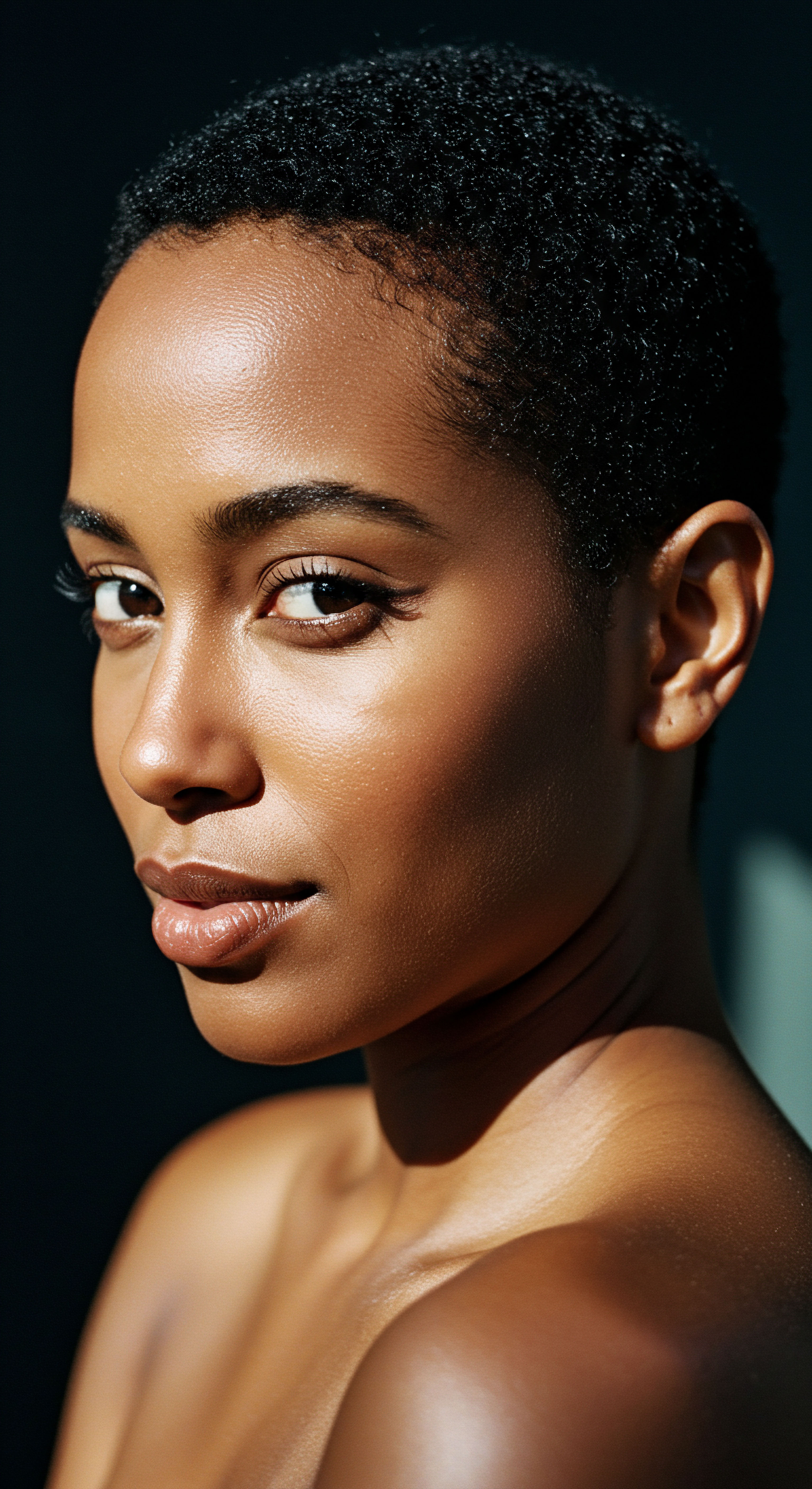
Satin’s Role in a Comprehensive Regimen
Integrating satin into a hair care routine represents a mindful approach to preservation. It acknowledges the inherent characteristics of textured hair – its tendency towards dryness, its unique curl patterns, and its susceptibility to friction-induced damage – and provides a simple yet effective solution. This isn’t about replacing other healthy hair practices, but rather augmenting them, providing an added layer of protection that works silently, often while one sleeps.
A deeper description of satin properties also touches upon the material composition. While often associated with silk, satin itself refers to the weave. Polyester satin, a common and more accessible option, provides many of the same low-friction benefits as silk satin, making it a widely available choice for many. The distinction between the fiber (silk, polyester) and the weave (satin) is important for informed consumer choices, allowing individuals to select materials that align with their budget and specific needs while still benefiting from the characteristic smoothness.
The deliberate choice of a satin-lined accessory or pillowcase becomes a statement of intentional care, a recognition that every element touching textured hair contributes to its overall well-being. This thoughtful consideration helps to reduce the cumulative effects of daily friction, allowing textured hair to flourish with greater ease and less intervention.
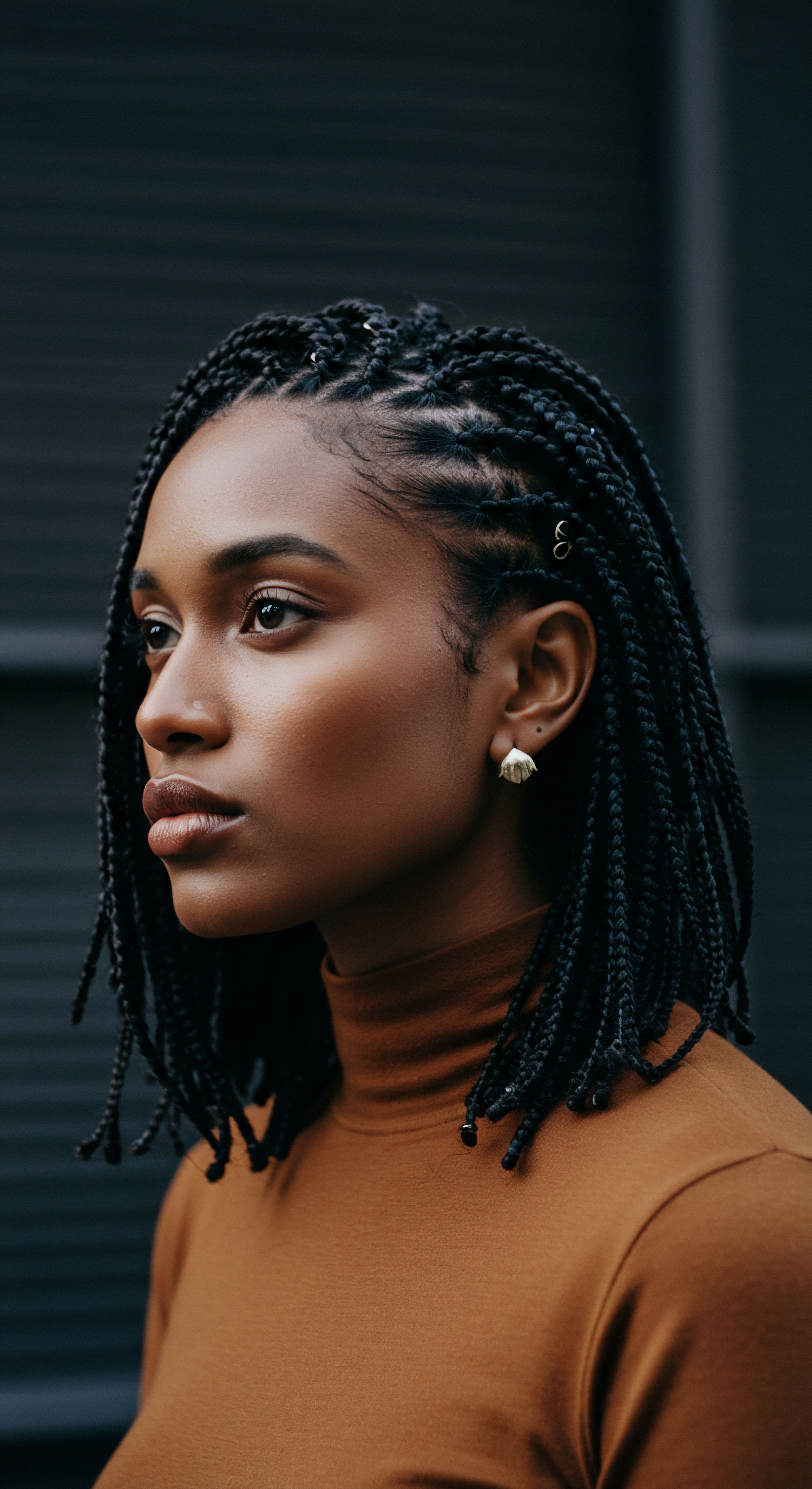
Advanced
The advanced interpretation of “satin properties” transcends mere surface smoothness, delving into the intricate interplay of textile science, hair biomechanics, and the socio-cultural heritage deeply connected to textured hair. For the expert, the designation of satin properties refers to a profound understanding of how this specific textile structure influences the delicate balance of a hair fiber’s integrity, particularly within the unique architecture of Black and mixed-race hair. This level of comprehension demands an appreciation for the subtle yet significant impacts on cuticle morphology, moisture equilibrium, and the long-term tensile resilience of hair strands.
The core explication of satin properties at an advanced level necessitates a look beyond the visible sheen to the microscopic dance between hair and fabric. Textured hair, characterized by its elliptical cross-section and varied curl patterns, possesses a cuticle layer whose scales may naturally be more lifted or prone to lifting. This structural predisposition, while contributing to the hair’s volumetric presence, also renders it inherently more susceptible to mechanical abrasion.
When hair interacts with a surface, the coefficient of friction plays a paramount role. Satin’s particular weave, with its long floating yarns, creates a low-friction interface, effectively reducing the shear forces that would otherwise abrade the cuticle, leading to a compromised protective barrier.
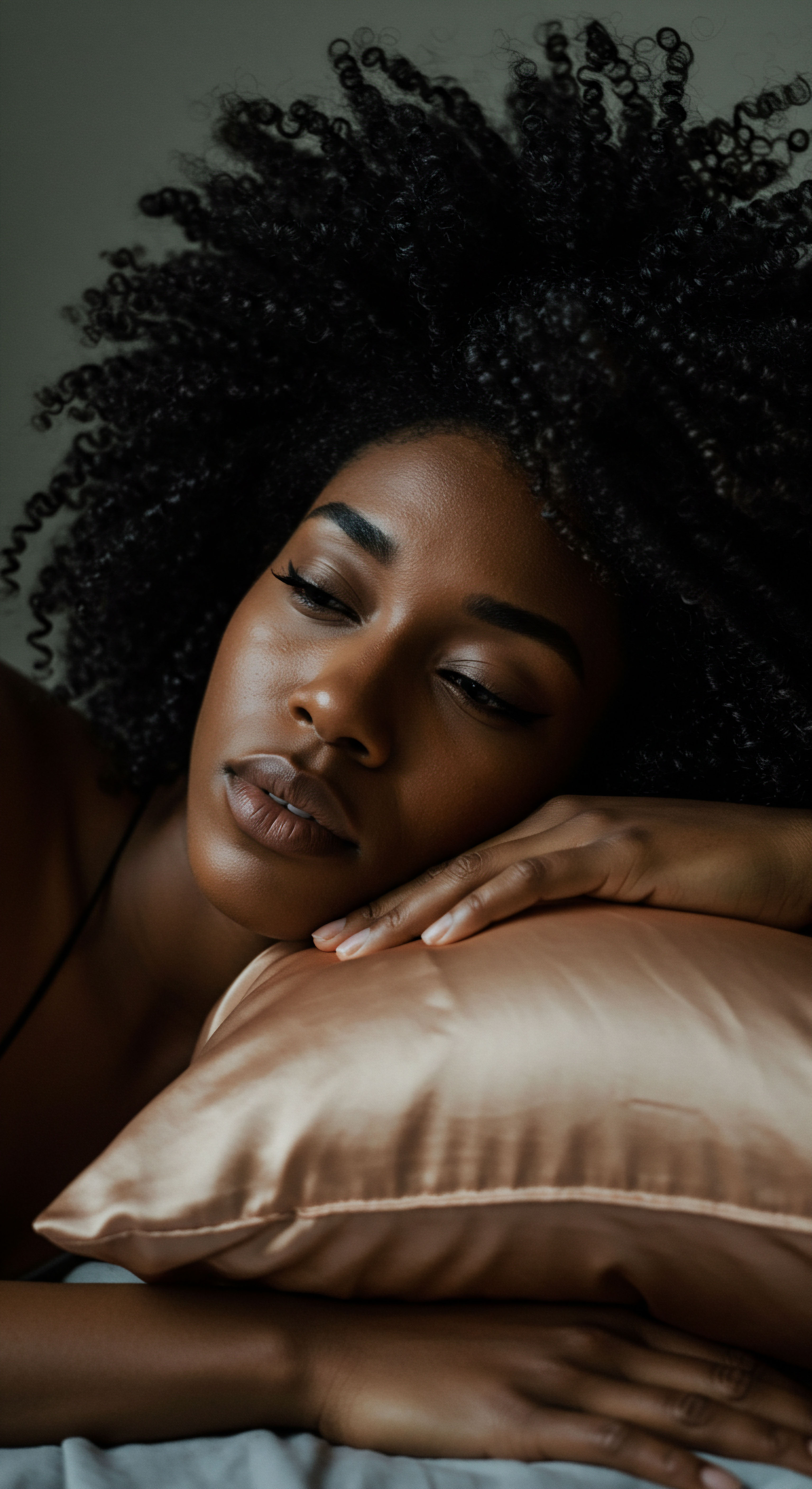
Microscopic Dynamics and Hair Biomechanics
From a biomechanical standpoint, the continuous attrition caused by high-friction surfaces contributes to a phenomenon known as “fatigue wear” on the hair shaft. This microscopic damage, accumulating over time, can lead to progressive cuticle degradation, exposing the underlying cortex and diminishing the hair’s inherent strength and elasticity. The specification of satin properties, then, becomes a strategy for mitigating this fatigue, thereby preserving the hair fiber’s structural integrity and its capacity for elastic recovery. This is particularly salient for textured hair, where maintaining the cuticle’s condition is crucial for preventing dryness and breakage, given the challenges of sebum distribution along a coiled strand.
Consider a provocative insight from textile science ❉ while the benefits of smooth fabrics for hair are widely accepted, the nuanced distinction between various smooth materials often remains underexplored in popular discourse. A study on the impact of drying methods on hair keratin integrity revealed that using a microfiber towel (composed of 80% polyester/20% nylon) better retained the integrity of human hair compared to drying with a blow-dryer or a 100% cotton towel. This research, while not directly comparing satin to other weaves, highlights that the composition and structure of a fabric, even synthetic ones, can profoundly affect hair health by influencing wear resistance and keratin structure.
The implication here is that the perceived superiority of natural silk over synthetic satin, while often true in terms of breathability and inherent protein benefits, may be less pronounced when considering only the friction-reducing properties, especially if the synthetic satin is engineered for optimal smoothness and weave density. This offers a point of discussion for those who may dismiss polyester satin, suggesting its structural benefits for friction reduction are indeed scientifically verifiable and valuable for textured hair care, making it a pragmatic choice.
The advanced meaning of satin properties encompasses a strategic approach to preserving hair fiber integrity by minimizing micro-abrasions and supporting moisture equilibrium, particularly for the unique biomechanics of textured hair.
The connotation of satin properties also extends to the realm of moisture dynamics. Hair, especially highly textured hair, is susceptible to losing its internal water content to the surrounding environment, a process exacerbated by absorbent fabrics. Satin’s tightly woven structure, regardless of its fiber composition, creates a less porous surface, thereby reducing the evaporative loss of moisture from the hair shaft.
This contributes to maintaining the hair’s natural hydration levels, which directly influences its flexibility, softness, and overall resilience against mechanical stress. The ability of hair to retain moisture is directly linked to its elasticity, a property that prevents snapping and allows curls to maintain their defined shape.

Cultural and Commercial Significance
The import of satin properties for textured hair also carries significant cultural weight. Historically, head coverings and wraps have served as protective measures for Black hair across generations, often out of necessity to shield hair from harsh elements or to maintain intricate styles. The modern application of satin materials for bonnets and pillowcases represents a continuation of this ancestral wisdom, reinterpreted through the lens of contemporary textile technology. This evolution signifies a collective understanding within the community of the specific needs of textured hair and the proactive measures required for its preservation and flourishing.
From a commercial and expert perspective, understanding satin properties allows for the precise formulation and marketing of hair care solutions. Companies can develop products that complement the protective benefits of satin, such as leave-in conditioners designed to lock in moisture, knowing that a satin surface will help prevent their absorption and allow them to perform optimally on the hair. This strategic alignment of textile science with cosmetic chemistry provides a comprehensive approach to hair wellness, fostering long-term hair health outcomes. The substance of satin properties, therefore, lies not just in its physical attributes, but in its profound and multifaceted contributions to the holistic care and cultural affirmation of textured hair.
The delineation of satin properties further encompasses the concept of a balanced hair environment. An alkaline pH, for instance, can increase negative electrical charges on the hair surface, which in turn elevates friction and static electricity, leading to cuticle damage and breakage. By minimizing external friction through the use of satin, one reduces an additional variable that could compromise the hair’s delicate pH balance and overall structural integrity. This interconnectedness between external factors and internal hair health highlights the sophisticated understanding required to fully appreciate the meaning of satin properties.
| Fabric Type Cotton |
| Key Properties Highly absorbent, rough surface texture, natural fiber. |
| Impact on Textured Hair Wicks moisture from hair, creates significant friction, leading to frizz, tangles, and breakage. |
| Advanced Considerations Increases cuticle lifting and microscopic damage, hindering length retention and requiring more frequent moisturizing. |
| Fabric Type Polyester Satin |
| Key Properties Smooth surface due to weave, synthetic fiber, less absorbent. |
| Impact on Textured Hair Reduces friction, helps retain moisture, minimizes frizz and tangles. |
| Advanced Considerations Offers significant mechanical protection against abrasion; while not naturally breathable or protein-rich like silk, its weave structure is the primary benefit. |
| Fabric Type Silk (Satin Weave) |
| Key Properties Natural protein fiber, smooth surface, breathable, moisture-regulating, contains amino acids. |
| Impact on Textured Hair Provides superior friction reduction, retains moisture, allows scalp to breathe, hypoallergenic. |
| Advanced Considerations Combines the structural benefits of a satin weave with the inherent biological advantages of natural proteins, potentially nourishing hair and scalp. |
| Fabric Type Wool/Rough Synthetics |
| Key Properties Coarse, high friction, can be absorbent. |
| Impact on Textured Hair Maximizes friction, causing severe tangling, breakage, and stripping of oils. |
| Advanced Considerations Accelerates cuticle damage and hair fiber degradation, leading to significant mechanical wear and reduced hair health. |
| Fabric Type Selecting materials with appropriate properties is a critical component of advanced hair care for textured hair, prioritizing surface smoothness and moisture preservation. |

Reflection
As we conclude our exploration of satin properties, a gentle truth settles upon us ❉ the care of textured hair is an intimate conversation between heritage, science, and self-acceptance. The smooth caress of satin, whether as a bonnet or a pillowcase, represents more than a mere fabric choice; it embodies a deliberate act of nurturing, a quiet rebellion against the historical forces that sought to diminish the beauty of our coils and curls.
Each strand of textured hair carries stories of resilience, of ancestral wisdom, and of a journey towards self-love. Providing it with the protective embrace of satin is a small yet profound gesture, allowing our hair to rest, recover, and thrive, undisturbed by the harsh realities of friction and moisture depletion. This practice connects us to a legacy of care, a continuous thread of preserving what is uniquely ours.
The path to truly understanding and celebrating textured hair involves both scientific inquiry and an empathetic connection to lived experiences. Satin properties, viewed through this lens, stand as a testament to how seemingly simple material choices can hold deep significance for wellness, cultural identity, and the serene flourishing of our natural crowns.
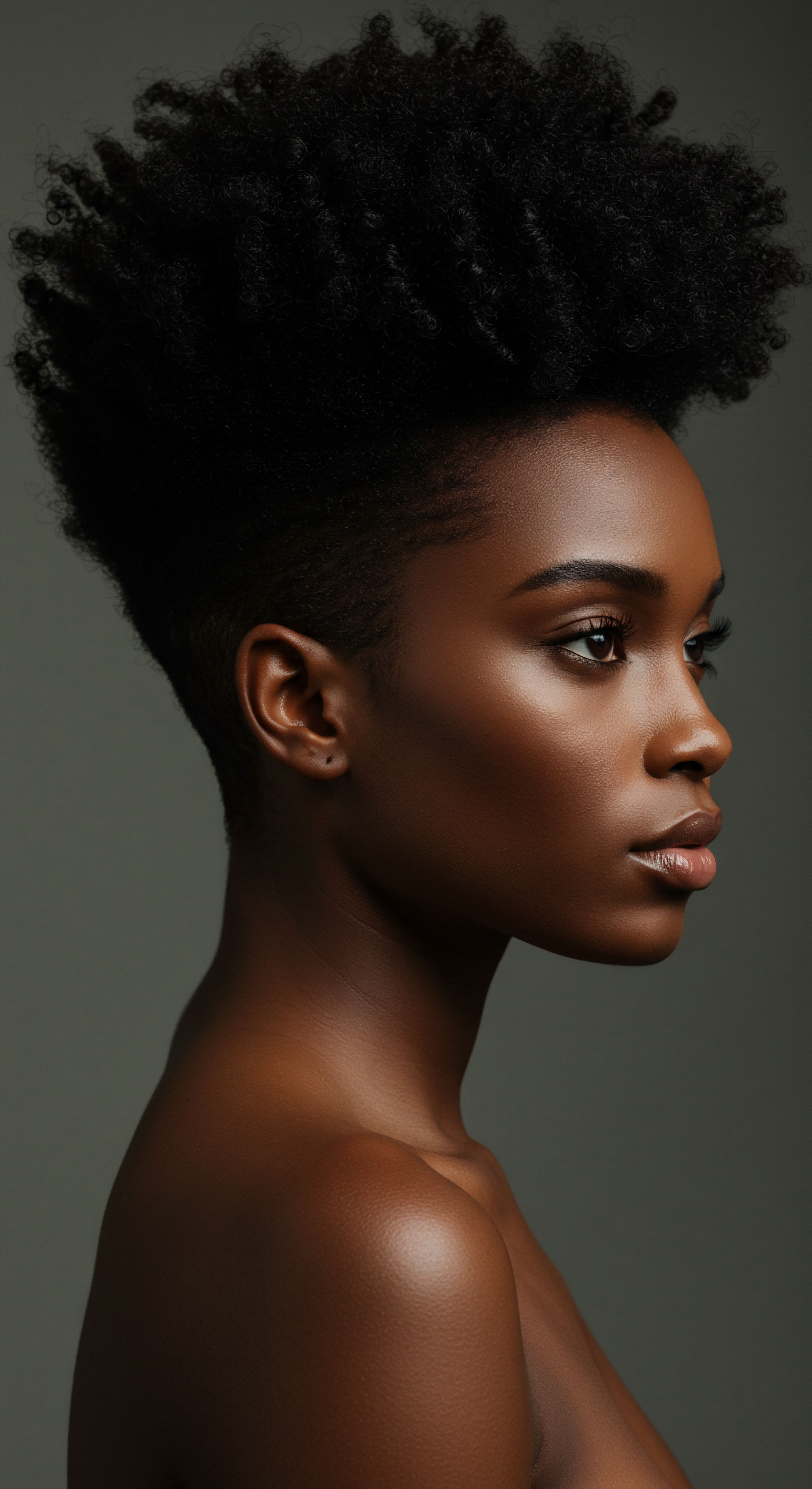
References
- 1. Aguh, C. & Okoye, G. A. (2017). Fundamentals of ethnic hair ❉ The science and art of Black hair. Springer.
- 2. Khumalo, N. P. Stone, J. & Grote, S. (2000). The mechanical properties of human hair ❉ The influence of water, chemical treatment and structural differences. International Journal of Cosmetic Science, 22(1), 1-13.
- 3. Porter, R. A. Khumalo, N. P. & Stone, J. (2005). The mechanical properties of African hair ❉ A study of its resistance to breakage. Journal of Cosmetic Science, 56(4), 217-227.
- 4. Robbins, C. R. (2012). Chemical and physical behavior of human hair (5th ed.). Springer.
- 5. Swift, J. A. (1999). The hair cuticle ❉ A review. Journal of Cosmetic Science, 50(2), 79-91.
- 6. Velasco, M. V. R. Dias, T. C. S. Freitas, A. Z. Vieira Júnior, N. D. Pinto, C. A. S. O. Kaneko, T. M. & Baby, A. R. (2009). Hair fiber characteristics and methods to evaluate hair physical and mechanical properties. Brazilian Journal of Pharmaceutical Sciences, 45(1), 153-162.
- 7. Wortmann, F. J. & Schwan-Jonczyk, A. (2006). Friction of human hair ❉ The influence of humidity and mechanical properties. Journal of Cosmetic Science, 57(2), 133-143.
- 8. Daniels, R. (2023). Science works to demystify hair and help it behave. Science News for Students, 16(3), 18-21.
- 9. Dias, M. F. R. G. & de Almeida, L. S. (2014). Hair cosmetics ❉ An overview. Springer.
- 10. Aguh, C. & Maibach, H. (2020). Hair and scalp diseases in children and adolescents. CRC Press.
- 11. Aguh, C. (2021). Hair loss in women ❉ Medical and cosmetic approaches. Springer.
- 12. Draelos, Z. D. (2011). Cosmetic dermatology ❉ Products and procedures. Wiley-Blackwell.
- 13. Trueb, R. M. (2016). Hair loss in women ❉ Medical and cosmetic approaches to alopecia. Springer.